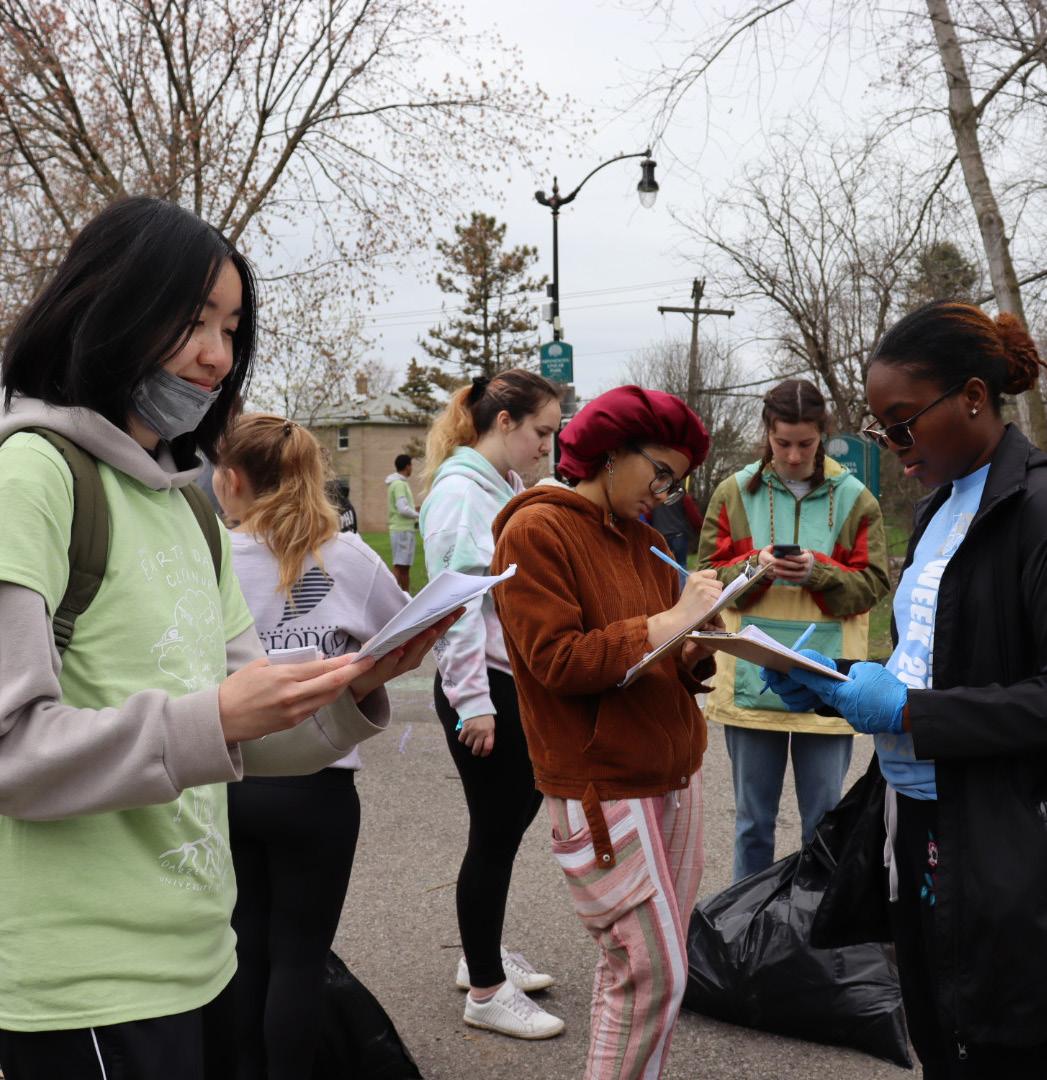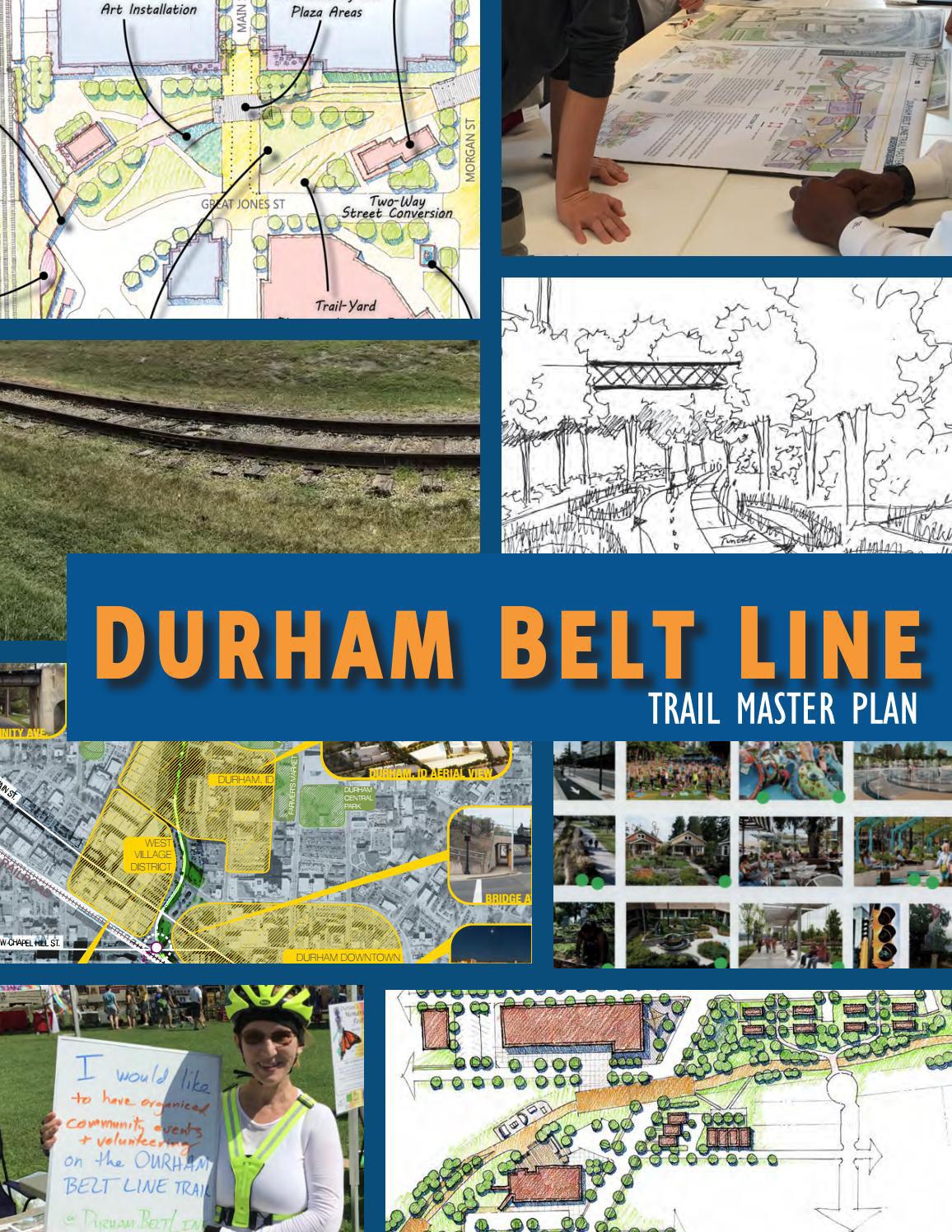
3 minute read
1.5 Existing Local Planning Context
02
CASE STUDIES & BEST PRACTICES
Advertisement
2.1 DURHAM BELT LINE
In August of 2018, Durham was directed to “create an engagement plan that will allow the City to create a racial equity plan regarding the Belt Line,” (2018, 2) in response to resident concerns regarding equity. Over ninety days, a blueprint was developed to reframe the city’s engagement process. The goal was to create a framework that could be used for community engagement procedures for future projects across the city. The city council recognized that it is crucial to be more inclusive with their decision-making process and prioritized finding strategies to engage with demographics that have been historically dismissed. The identified general themes include accessibility, accountability, power-sharing, inclusion, information, timeliness, and transparency. The first thing they did was adopt a set of values. The values that were identified were: right to be involved, contribution will be thoughtfully considered, recognize the needs of all, seek out involvement, participants design participation, adequate information, and known effect of participation. Their next step was to collect baseline data on who was currently involved with engagement and those who were underrepresented. The Community Engagement team then met with community members to understand more about why people aren’t more involved in engagement and different ways to engage with those residents.
After analyzing the data collected from both research and talking to residents, the city drafted the Steps to Build Equitable Community Engagement Plan. This is a five-step plan that focuses on the level of engagement that should be used, who should be engaged, how engagement should happen, how to measure successful engagement, and how to build for the long-term. This draft is not a one-size-fits-all; however, it outlines key components of how the engagement process should be delivered. This blueprint was applied to the Durham Belt Line Trail Equitable Engagement Plan and continues to help the city perform equitable engagement and build trust within the community.3


Equitable Community Engagement Blueprint
Introduction
The Neighborhood Improvement Services Department (NIS) works to preserve and improve quality of life conditions for Durham residents, and to encourage active participation in neighborhood redevelopment and public policy and decision making dialogue. The Community Engagement Team strives to inform, engage, partner and empower the Durham community. The City has not executed a standardized process for conducting community engagement that is shared or adopted by all Departments. Furthermore, the City has not developed an equitable community engagement process that ensures that its outreach or information-gathering approaches include an intentional effort to engage a representation of the City’s diversity. The Community Engagement Team of NIS, to match the goal of encouraging active participation in neighborhood redevelopment and public policy and decision making dialogue, has created an Equitable Community Engagement Blueprint through conversation with other departments and community leaders.
Background
The City of Durham strives to be a welcoming, diverse and innovative community. Equity and resident engagement are key components of the City’s FY2019-2021 Strategic Plan, includes Advance a More Inclusive and Equitable Durham, Shared Economic Prosperity, and the Language Access Plan.
“Many current inequities are sustained by historical legacies and structures and systems that repeat patterns of exclusion. Institutions and structures have continued to create and perpetuate inequities, despite the lack of explicit intention. Without intentional intervention, institutions and structures will continue to perpetuate racial inequities. Government has the ability to implement policy change at multiple levels and across multiple sectors to drive larger systemic change. Routine use of a racial equity tool explicitly integrates racial equity into governmental operations.” (Government Alliance on Race & Equity, 2018)
In order to create strategies for equity to achieve the City’s vision of an excellent and sustainable quality of life for all residents, the City must engage the community in an equitable way.









